The East Hampton Volunteer Ocean Rescue Squad in a flier wants it known that this week, beginning on Sunday, is National Beach Safety Week, and, in keeping with the theme, has provided the following desiderata:
Outdoors
On Sunday, Mary Lee’s dorsal fin broke the surface a few miles off the eastern shore of Virginia at 10:29 a.m., prompting a ping to sail aloft, bounce off a satellite, and report to the OCEARCH organization, whose website transmits the information in very close to real time.
Which came first, the chicken or the egg? Well, if you believe in evolution the answer is easy.
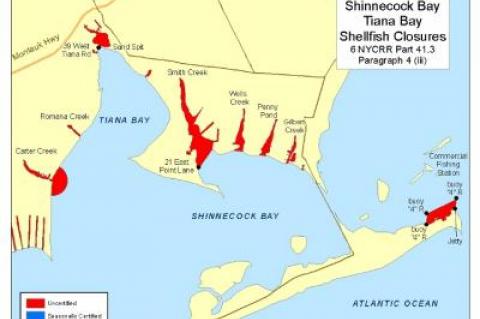 State Reopens Shellfishing Areas, Warns of Blue-Green Algae in Southampton
State Reopens Shellfishing Areas, Warns of Blue-Green Algae in SouthamptonApproximately 3,600 acres of Shinnecock Bay were reopened on Friday after being closed for two weeks after saxitoxin was found. Warnings were issued the same day for potentially harmful blue-green algae in two Southampton ponds.
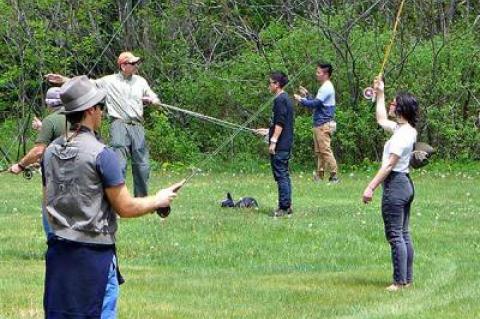 From the Mighty Falls
From the Mighty FallsI’m writing this heading back to saltwater from Buffalo and my first-ever visit to Niagara Falls. We crossed into Canada to view the three sections of Gahnawehta, as the Indians called them, to go aboard the vessel Hornblower — the equivalent of the Maid of the Mist from the United States side — to view the cascades from below.
We just had a glorious weekend in which all the hardwoods, save for the white oaks, which always are the last to foliate, were festooned with fresh green leaves. Thus it was a perfect setting for the arrival of the New World warblers, which every year near the middle of May stop on Long Island to feed and rest after a long flight from their southern winter climes.
 Fog Rolls In, So Do Fish
Fog Rolls In, So Do FishIn May, the sea draws a gauzy shroud over the southerly half of Montauk just as a blanket of white blossoms eases winter’s final chill. It’s as though the light, ghostly fog whispers a wakeup to the shadblow, “You can come out now.”
It’s getting warm. We need some rain. The small rainwater ponds are drying up, the peepers are barely peeping, but the shads are blooming nicely and the dogwoods are out at the same time.
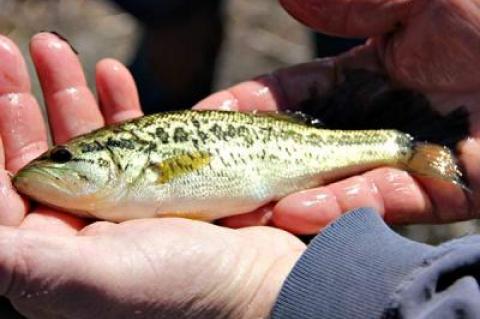 Nature Notes: A Montauk Pond Tour
Nature Notes: A Montauk Pond TourThe weekend was a blaze of glory. The sun shone, the bay waters were mostly calm, the shads and sweet cherries began to bloom to the west, and the shads along Napeague and in Montauk were on the verge of busting out.
 Finding the Sweet Spot
Finding the Sweet SpotI’ve been researching how waves are formed in order to create, and by July present, a narrated video explanation for visitors to the new Oceans Institute of the Montauk Lighthouse Museum. We hope to open the doors by the Fourth of July.
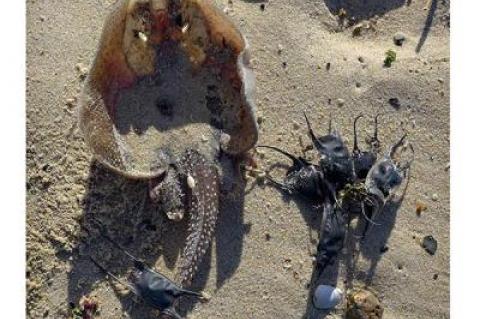 Mermaid Purses’ Treasures
Mermaid Purses’ TreasuresLet’s face it, if skates, with their bat wings and rat tails, flew in the sky instead of along the bottom of the sea, we’d run inside like cave people fleeing pterodactyls and wait for them to pass.
 Nature Notes: If It’s Not One Thing . . .
Nature Notes: If It’s Not One Thing . . .The current building boom has laid down a lot of big trees before they had a chance to leaf out, but it apparently hasn’t deterred the birds from returning from the south.
 The Scent of the Sea
The Scent of the SeaI walked east along the rocky beach from Ditch Plain into the Montauk moorlands on Friday. The day before I’d learned a new word, “brumous.” It describes a heavy mist, a good word for Friday, for this place and time of year.
 A Is for Alewife, H Is for Hawk
A Is for Alewife, H Is for HawkConsider the following as an open letter to Larry Penny, The Star’s longtime nature columnist, my good friend, and an indispensable member of the East End community.
Larry, I’m writing this to encourage you to read “H Is for Hawk,” a memoir by Helen Macdonald. Just came out. It’s a beautifully written meditation on one person’s relationship to the wild, and what “wild” means in our time.
 Nature Notes: View From California
Nature Notes: View From CaliforniaEnvironmental awareness is big here, as big as it is on eastern Long Island. Water, or the lack of it, is the major topic of the moment.
This year we decided on lobsters for Easter dinner instead of lamb. It seemed the right thing after the hard winter, although I’m not sure why. More celebratory perhaps, or because Duryea’s has a great price on a package deal that includes lobsters, New England clam chowder, and either a bag of mussels or Little Necks.
We had invited a few friends over, so I set about getting the big lobster pot out of mothballs and searching for the tools needed to pierce the lobsters’ armor. Personally, I don’t need the hinged shell crackers and meat picks.
We finally broke through to placid spring, but it was a rough one on us and a rough one on nature. Waterfowl and water birds took it on the nose and so did several fish. Greg Boeklin, the bald eagle watcher in Sagaponack, saw several dead fish at the top of Sagg Pond. He couldn’t tell the species; they were decomposing. They may have been alewives. In some years when the water from Jeremy’s Hole comes down in a gush by way of Solomon’s Creek, the alewives make it up to the little water body to reproduce.
 Nature Notes: Busting Out All Over
Nature Notes: Busting Out All OverWhen the peepers start singing two things come to mind. There’s water in the vernal ponds and it’s warming up.
As of Monday the alewives are slow in coming but, nonetheless, many of the ospreys are back and ready to catch them as soon as they appear. On Sunday afternoon the spring peepers were peeping away in Big Reed Pond in Montauk. Evidently, they had just come up from hiding after a very long, cold, and snow-covered winter. Once they are up, they don’t retreat. They are mandated to sing and reproduce.
I’m embarrassed for my freezer. It’s pathetic, or it was. So much in and around the house that needs attention after the harsh winter just past. Where do I start? Then I opened the freezer compartment of the refrigerator and it screamed.
A frozen wasteland. A scene from “Dr. Zhivago.” The coldest, most uncomfortable day of the winter, heavy clothes strewn about the house, wet boots, the rattle of the furnace, an old, leaky window — all of it was before me when I opened the freezer door, a diorama of the winter of 2015. I closed it.
After two major retreats spring marches on. There is no turning back, or is there? In this millennium there have been several spring northeasters, and in March 2010 the East End got more than seven inches of rain in two close-together storms.
I’ve been working on a book. Slow going at first. But, as most writers will attest, once the narrative ball gets rolling, even if it seems at times to be rolling uphill, the work becomes an oasis of sorts, a place to repair to in your mind.
It’s a bit like having the ability to summon a dream, or a semi-obedient genie whose job it is to gather kindling to feed fantasy’s fire, or at least provide food for thought.
The snow is melting away quickly, and the ice in the bays is disappearing almost as fast. Spring is three days away. Things are heating up. The black widow spider that lives between the panes of my south-facing window has made her end-of-winter debut. I’m sure she hasn’t eaten a thing since the end of summer, as she is the same size as when she retreated in the fall.
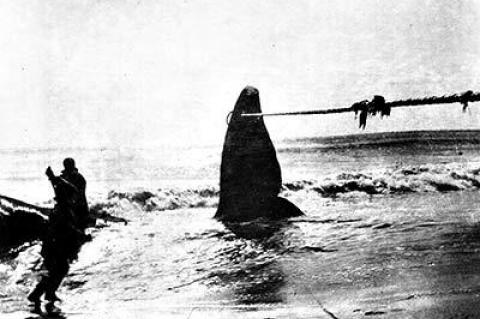 Cannibalism, Two Ways
Cannibalism, Two WaysIt’s 1820, the middle of the Pacific Ocean. Two sperm whales have been harpooned from the small boats launched from the whaler Essex out of Nantucket. A bull sperm whale does not like what’s going on. Enraged, it charges the Essex, ramming her bow twice. The ship fills with water, capsizes, and leaves her crew of 20 to head for the coast of South America a couple of thousand miles away in three boats with nothing but a limited supply of hardtack and very little water. Half die en route, the others barely survive by cannibalizing their fellow whalemen.
You might have seen Senator Charles Schumer on the news on Monday taking PSEG and the United States Environmental Protection Agency to task for allowing 95,000 or so penta-treated utility poles to be installed on Long Island. Penta, or pentachlorophenol, is not only very toxic if inhaled, touched, or ingested, it is also classified as a probable carcinogen. That is why it has already been banned for use by more than 26 countries and counting.
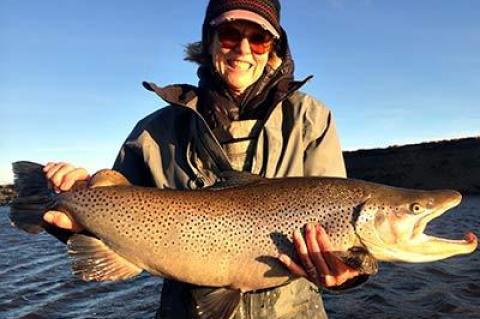 The Ferrins On The Fly, Globally
The Ferrins On The Fly, GloballyKen Ferrin first fly-fished at the age of 19 at Flathead Lake in Montana, where he was the waterfront director at a boys camp.
A long hiatus followed, until four years ago, at the age of 78, he suggested to his wife and tennis and cycling partner, Patti, with whom he’s biked all over the world, that they forgo heli-skiing, which they’d done for 20 years, in Canada, in favor of fly-fishing.
 The Hills Are Still Alive
The Hills Are Still AliveWe had the opportunity to head for the hills and early Sunday morning we took it: the South Ferry to a sleeping Shelter Island, then we stemmed the tide and a few car-size icebergs over to Greenport on the North Ferry where we bought scones and coffee for the ride to meet the 9 a.m. Cross Sound Ferry to New London, bound for Stowe, Vt.
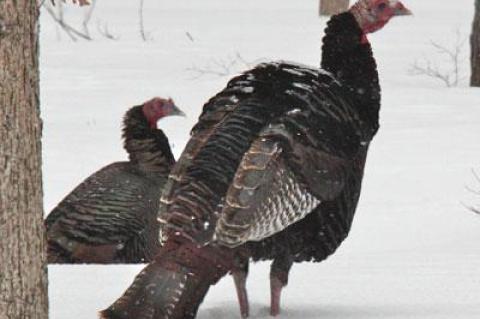 Nature Notes: Plummeting Population
Nature Notes: Plummeting PopulationMy ichthyologist buddy, Howard Reisman, who lives in North Sea, says that, notwithstanding the monthlong occupation of North Sea Harbor and other inlets and coves of the Peconics, the alewives are out there and ready to move in to Big Fresh Pond as soon as their passageway thaws. They have been arriving annually at this time every year like clockwork for at least a half-century and most likely for several centuries. The streamway connecting the harbor to the pond can be high or low, depending upon the standing level of the water in Big Fresh.
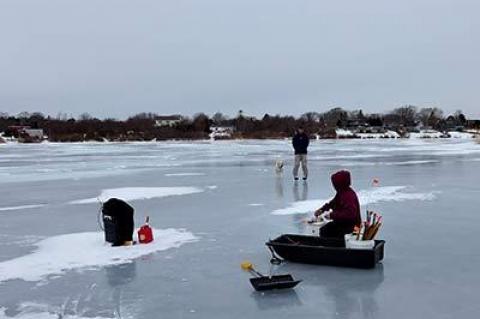 The Iceman Fisheth
The Iceman FishethThe winter of 2015 refused to loosen its grip. As a result, cold-weather passions that have lain dormant in recent years returned with a vengeance in the Northeast.
Ski resorts upstate and in New England have not seen so much snow in years. Iceboats have been dragged out of storage and onto Long Island lakes and ponds. One of the more intense winter passions is the otherworldly sport of ice fishing.
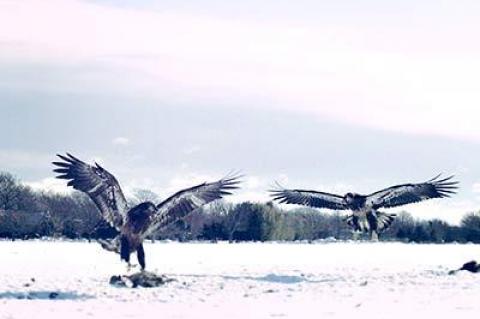 Nature Notes: The Behavior of Birds
Nature Notes: The Behavior of BirdsThe great American winter pastime for those of us who live not too far from the Arctic Circle: feeding and watching birds. Each bird species has its own unique way of staying active when the windchills are in the single digits and the sun is covered up by a pale gray sky for most of the day.
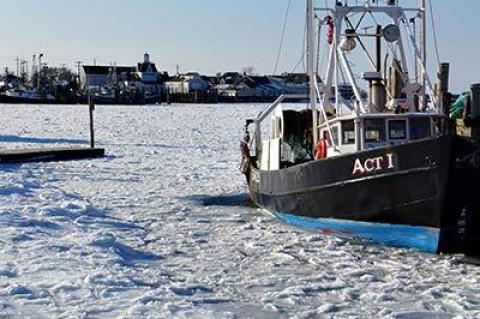 Winter on the Rocks
Winter on the RocksConsider ice: It can be a bulldozer that lifts a few thousand pounds of buoy off the bottom and carries it to new location a half mile away. It can be millions of tiny crystalline blades that scalp the terra firma from the face of a bluff. Ice can suck a piling from deep in a harbor’s clay as easily as pulling a toothpick from an olive in an ice-cold martini.
